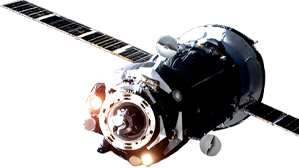
Editor’s Note: This post is part of our weekly NVIDIA Studio series, which introduces the main artists, provides creative tips and tricks, and shows how NVIDIA Studio technology accelerates creative workflows.
This week, we launched the NVIDIA Studio Driver in NVIDIA Studio with optimization for the most popular 3D applications, including Unreal Engine 5, Cinema4D and Chaos Vantage. The driver also supports the new NVIDIA Omniverse Connectors Blender and Redshift.
Digital da Vincis who want to upgrade their screens can learn more about the newly announced Lenovo ThinkPad P1 NVIDIA Studio laptop, or pick up the Asus ProArt Studiobook 16, MSI Creator Pro Z16 and Z17 – everything is there right now.
These updates are part of NVIDIA Studio’s benefits: dramatically accelerated 3D creative workflows that are important to this week’s author Author NVIDIA Studio Andrew Averkin, a leading 3D environmental artist at NVIDIA.
The April rain brings the power of a studio controller
April NVIDIA Studio Driver supports most of the latest creative application updates, starting with the expected launch of Unreal Engine 5.
NVIDIA RTX GPUs support Lumen – the new, fully dynamic global lighting system UE5 – for software and hardware ray tracing. With Nanite, developers are empowered to create games and applications with many geometric details with fully dynamic global lighting. Last month, NVIDIA introduced an updated Omniverse Connector at GTC, which includes the ability to export Nanite network source geometry from Unreal Engine.
NVIDIA has partnered with Epic Games to integrate several key RTX technologies into Unreal Engine 5. These plugins are also available on the Unreal Engine Marketplace. Ray tracing with RTX and NVIDIA DLSS acceleration in the viewport facilitates and speeds up the acquisition and refinement of new ideas. For a finished product, the same technologies can enable beautiful ray graphics, while AI allows for higher frame rates.
With NVIDIA Reflex – a standard UE5 feature that does not require a separate plugin or download – PC games running on an RTX GPU will experience unimaginably low latency. NVIDIA real-time dehumidifiers offer real-time performance, increasing the efficiency of artificial piping. RTX Global Lighting creates realistic reflective lighting in real time and gives artists instant feedback in the Unreal Editor viewport. Thanks to the computing power of the RTX GPU, a set of high-quality RTX UE plugins and the new generation of UE5, there is no performance limitation.
The Maxon Cinema 4D version of the S26 includes all the new dust and cable dynamics, powered by the NVIDIA RTX GPU, allowing artists to model digital objects faster with added realism.
The CPU only takes an hour to render the “The City” scene with the NVIDIA GeForce RTX 3090 GPU!
Other features include the adoption of OpenColorIO, a new camera and improved modeling tools.
Chaos Vantage, aided by real-time ray tracing exclusively on the NVIDIA RTX GPU, adds support for normal maps, a new feature to convert model textures to clay to focus on lighting, and ambient occlusion for shadows.
NVIDIA Omniverse Connector updates provide real-time workflows and new features and capabilities. Blender adds new I / O shape support to the mix to ensure that automated multifunction objects are animated and animated correctly. In addition, new USD-sized film visualization maps are opening up.
Blender and Redshift add hydra-based rendering. Artists can now use their renderer to select in the viewport of all Omniverse applications.
New Driver Studio, Meet the New Laptops Studio
April also brought a new Lenovo mobile workstation to the NVIDIA Studio line, in addition to the availability of three more.
The Lenovo ThinkPad P1 has a slim and lightweight design, a 16-inch panel and an impressive display powered by professional GeForce RTX and NVIDIA RTX graphics, equipped with the new NVIDIA RTX A5500 notebook graphics processor.
Other partner studio notebooks include the recently announced Asus ProArt Studiobook 16, MSI Creator Pro Z16 and Z17, which are now available for purchase.
Walk Memory Lane with Andrew Averkin
Andrew Averkin is a leading Ukrainian 3D environmental artist at NVIDIA. He specializes in creating photorealistic 3D scenes, focused on realism, which consciously evokes a warm feeling of nostalgia.
Averkin leads with empathy, which is a critical part of his running state, and says his goal is to “create works of art that combine warm feelings that inspire my love and commitment to art.”
The piece below, When We Were Kids, was created using NVIDIA Omniverse Create and Autodesk 3ds Max, powered by an NVIDIA RTX A6000 GPU.
Here, Averkin goes back to pre-digital toy shopping times and lets your imagination move. Averkin first modeled When We We Were Kids on Autodesk 3ds Max.
GPU-accelerated GPU cropping and RTX-accelerated AI noise reduction in Autodesk 3ds Max enable seamless interactivity across large files.
Averkin then brought When We We Were Kids to Omniverse Create to illuminate, simulate and create his 3D scene in real time.
Omniverse allows 3D artists like Averkin to combine their favorite design tool into a single scene while creating and editing between applications. The “Getting Started with NVIDIA Omniverse” series on NVIDIA Studio YouTube is a great place to learn more. At Omniverse Create, Averkin uses special lighting tools for its artwork that automatically update the original Autodesk 3ds Max file without the hassle and time-consuming file conversions and uploads. which ends with the latest files delivered at the speed of light of your GPX RTX.
Averkin previously worked at Axis Animation, Blur Studio and elsewhere. View his portfolio and favorite ArtStation projects.
Dive deeper into NVIDIA Studio
For creators who want to learn more about the applications used by the lead artist this week, there are plenty of resources and how GPU RTX and GeForce RTX can help speed up creative workflows.
Take a look behind the scenes of the Narrator, built by Omniverse and featuring a special, photo-realistic room for retro-style writers. Check out this tutorial from 3D artist Sir Wade Neistadt, which will show you how to transfer workflows for multiple applications to Omniverse using USD files and set up Nucleus for live link tools.








 Download Our Brochure
Download Our Brochure